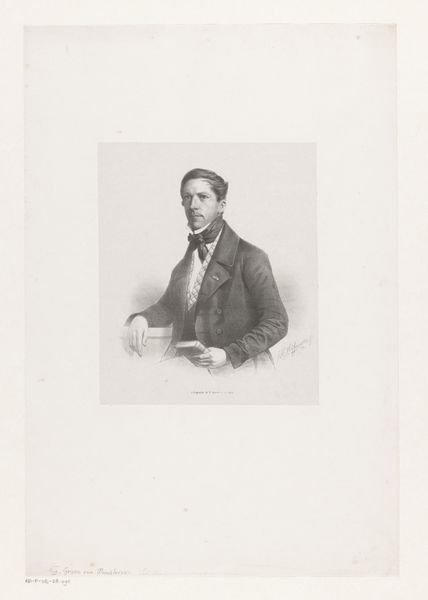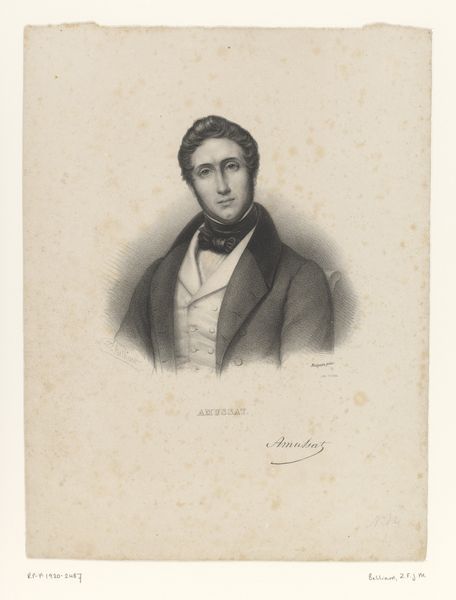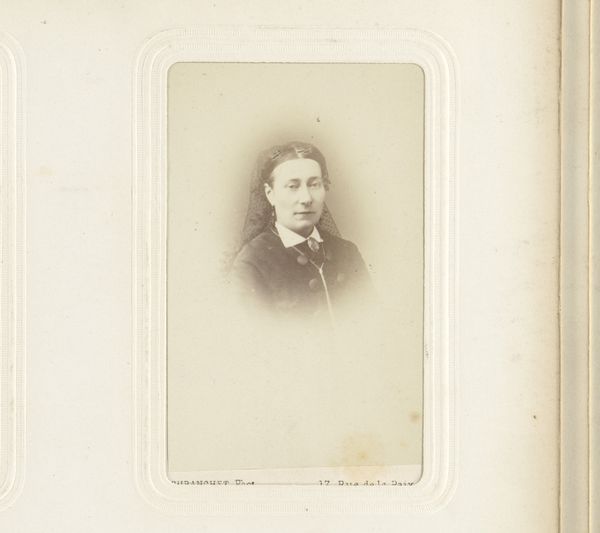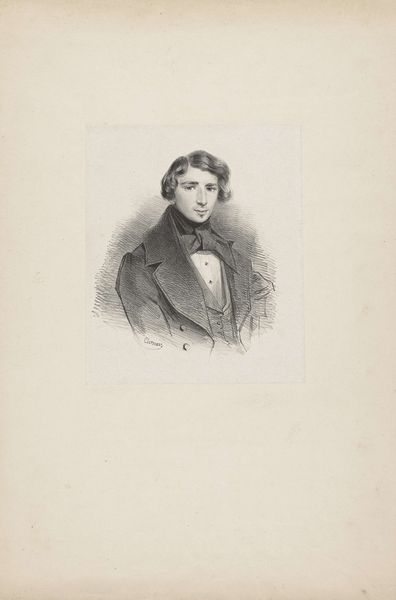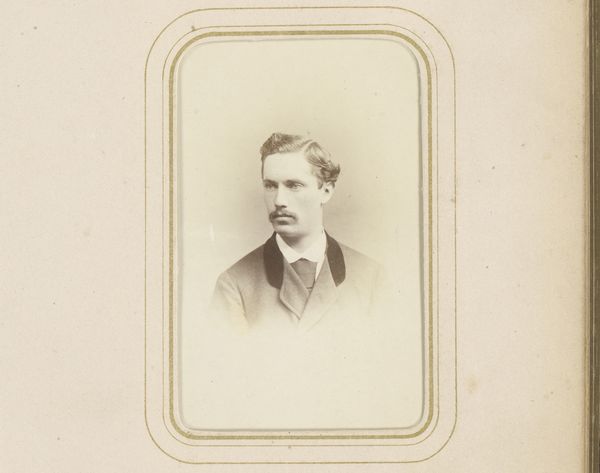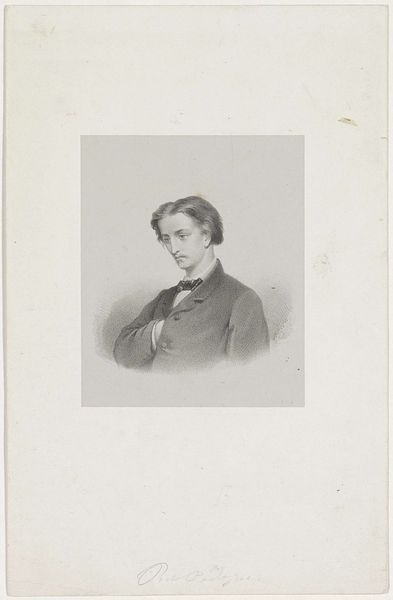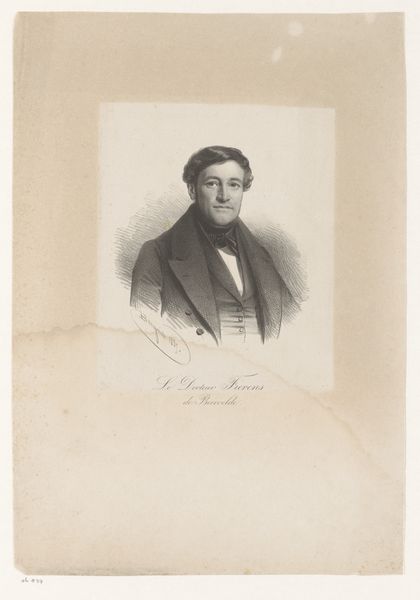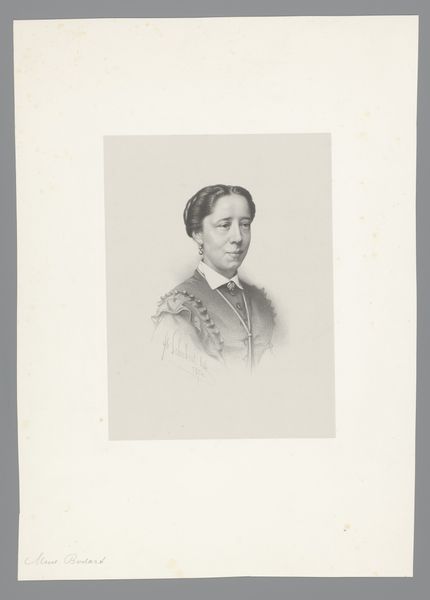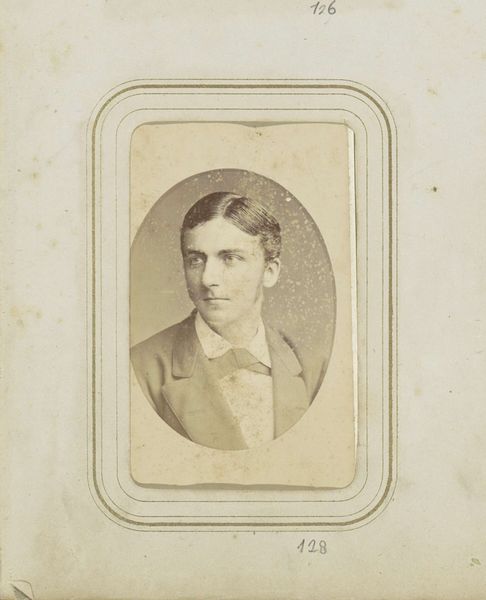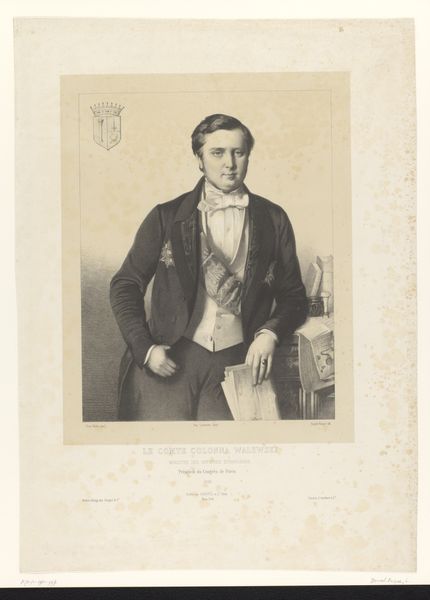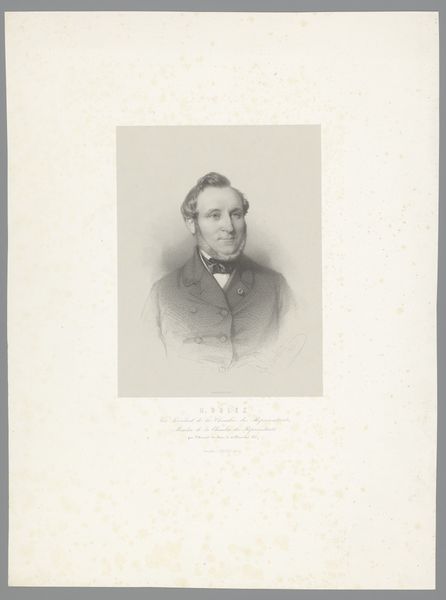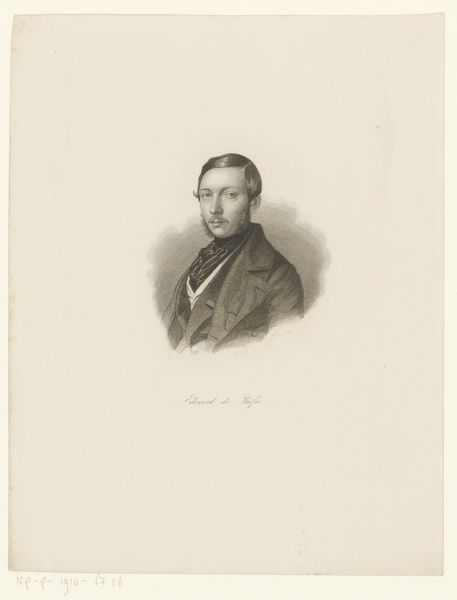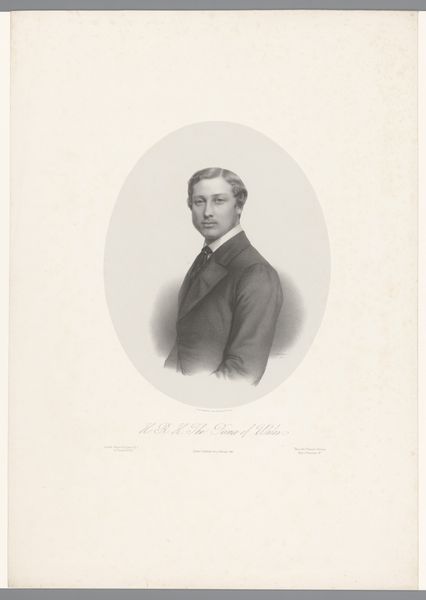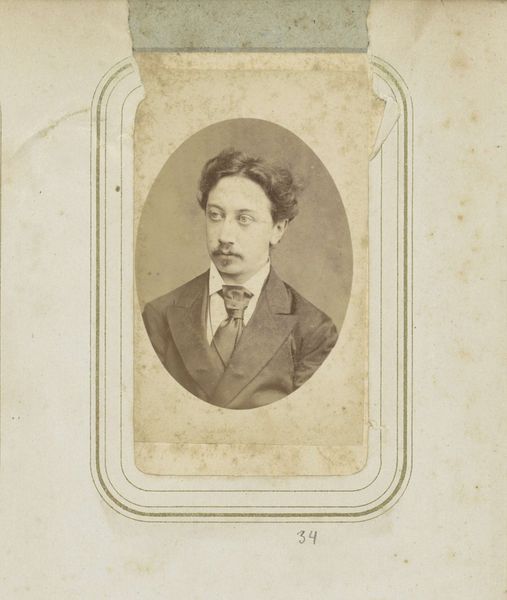
drawing, print, graphite
portrait
drawing
graphite
academic-art
realism
Dimensions: height 473 mm, width 360 mm
Copyright: Rijks Museum: Open Domain
Editor: This is "Portret van Nicolas Cambier," created in 1872 by Joseph Schubert, made with graphite and print. The soft, almost dreamlike quality gives the subject a very contemplative aura, don't you think? What draws your eye when you look at this portrait? Curator: That gentle haziness! It reminds me of those daguerreotypes trying so hard to capture a soul. But Schubert, ah, he does more than capture—he interprets. Look at how the light kisses Cambier’s face, leaving the rest in almost suggestive shadow. It's like Schubert’s saying, "Here’s a man, yes, but also an enigma." He's not just rendering a likeness; he is offering us a story without words. A whisper, almost, about a life lived. Don't you think? What do you imagine Nicolas Cambier was thinking, as he sat there? Editor: I wonder if he felt the weight of being immortalized, or if it felt ordinary to him? What statement do you think the artist was making by choosing graphite and print over more traditional oil paints for a portrait like this? Curator: Maybe it’s a gentle rebellion. Oils were for the established, the wealthy. Graphite has a humbler soul. A democratic touch, if you will. Perhaps Schubert saw something genuine in Cambier that demanded a less ostentatious medium. Or maybe it's purely a comment on fleeting time, ephemeral graphite for a brief existence. Makes you ponder the intentions and secrets behind even a quiet portrait, doesn't it? Editor: Absolutely. It's funny how a simple portrait can hold so much complexity and unspoken meaning. I'll never look at graphite the same way again. Curator: Precisely! That’s the joy of art. It's like peering through a keyhole into someone else's dream. We all just have to provide the key.
Comments
No comments
Be the first to comment and join the conversation on the ultimate creative platform.
